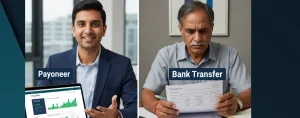When it comes to international money transfers, tax compliance can feel overwhelming. Whether you’re sending money abroad for education, travel, investment, or medical treatment, understanding India’s tax laws on outward remittance is crucial.
One such regulation is Section 206C(1G) of the Income-tax Act, 1961, which introduces Tax Collected at Source (TCS) on foreign remittances under the Liberalized Remittance Scheme (LRS). This blog simplifies the complexities of TCS, its rates, applicability, and how it impacts you when transferring money abroad.
At HiWiPay, we aim to make outward remittance seamless, compliant, and secure—ensuring your funds reach their international destination without regulatory hiccups.
What is LRS (Liberalized Remittance Scheme)?
The Liberalized Remittance Scheme (LRS), launched by the Reserve Bank of India (RBI) in 2004, allows Indian residents to remit up to USD 250,000 per financial year abroad for specific permissible transactions.
Before you remit, know the RBI rules. Read our detailed breakdown of RBI Outward Remittance Guidelines
Under LRS, you can send money overseas for:
- Foreign education
- Medical treatment
- International travel
- Purchasing foreign property
- Investments in overseas securities and assets
At HiWiPay, we provide a fast, transparent, and RBI-compliant platform for international money transfers under LRS, ensuring you never miss deadlines for tuition fees, medical bills, or investment opportunities.
What is TCS (Tax Collected at Source)?
Tax Collected at Source (TCS) is a tax collected by authorized dealers (banks or financial institutions) when you remit funds abroad under LRS. Think of it as a prepaid advance tax—it’s not an extra charge, but an amount adjustable against your tax liability while filing returns.
👉 Section 206C(1G) governs this TCS on foreign outward remittance, making it mandatory once your remittance crosses a prescribed threshold.
Why is TCS Charged on Outward Remittances?
TCS is applied for several regulatory and economic reasons:
✅ To track large foreign transactions – Helps authorities monitor high-value foreign expenses (education, tours, investments).
✅ To widen the tax base – Ensures individuals making large overseas remittances are accounted for in the tax system.
✅ To discourage excessive foreign exchange outflow – Higher TCS on non-essential remittances curbs unnecessary capital flight.
With HiWiPay’s outward remittance services, all transactions are processed with full compliance under TCS guidelines, so you never risk penalties or non-compliance.
TCS Rates on Outward Remittance (Before & After 1 April 2025)
Here’s a detailed table showing TCS rates under Section 206C(1G) for various remittance purposes:
| S. No. | Purpose of Remittance | TCS Rate Before 1 April 2025 | TCS Rate On or After 1 April 2025 |
| 1 | Education (not funded by loan) or Medical Treatment | Nil up to ₹7 lakh; 5% above ₹7 lakh | Nil up to ₹10 lakh; 5% above ₹10 lakh |
| 2 | Education (funded by loan) | Nil up to ₹7 lakh; 0.5% above ₹7 lakh | No TCS applicable |
| 3 | Medical Treatment | 5% above ₹7 lakh | 5% above ₹10 lakh |
| 4 | Any other purpose (investment, gifts, etc.) | Nil up to ₹7 lakh; 20% above ₹7 lakh | Nil up to ₹10 lakh; 20% above ₹10 lakh |
| 5 | Overseas Tour Package | 5% up to ₹7 lakh; 20% above ₹7 lakh | 5% up to ₹10 lakh; 20% above ₹10 lakh |
✅ Pro Tip: Transactions through HiWiPay are automatically categorized for the correct TCS rate and deduction—saving you the hassle of manual classification.
Who Collects TCS on Foreign Remittance?
Only Authorized Dealers (ADs) can collect TCS:
- AD Category I: Scheduled commercial banks
- AD Category II: Money transfer companies licensed by RBI
HiWiPay partners with both AD1 and AD2 dealers to process your overseas payments safely and efficiently, ensuring you comply with LRS and TCS regulations every step of the way.
How to Check and Claim TCS?
You can track and claim your deducted TCS using:
- Form 27D: Issued by the authorized dealer as proof of TCS collection
- Form 26AS: Available on the Income Tax e-filing portal, showing TDS/TCS credits under your PAN
- AIS & TIS Statements: Additional statements available on the IT portal confirming TCS deductions
👉 You can adjust this TCS while filing your Income Tax Return (ITR) against your total tax liability.
Conclusion
TCS on outward remittance under Section 206C(1G) reflects the government’s effort to ensure transparency, widen the tax base, and regulate international fund flows under LRS.
Understanding how TCS works, its rates, and compliance requirements is vital for individuals and businesses involved in overseas money transfers.
With HiWiPay, you can confidently send funds abroad knowing you’re compliant with RBI and Income Tax rules—while enjoying fast, secure, and competitive remittance services tailored for education fees, medical payments, investments, and more.
FAQs on TCS under Section 206C(1G)
Does TCS apply to Non-Resident Indians (NRIs)?
How is TCS adjusted?
Does TCS apply on educational remittance funded by a loan?
What is the limit under LRS?
Can I remit without TCS deduction?
For seamless outward remittance solutions and expert compliance support, choose HiWiPay—your trusted partner for secure international money transfers under LRS.



